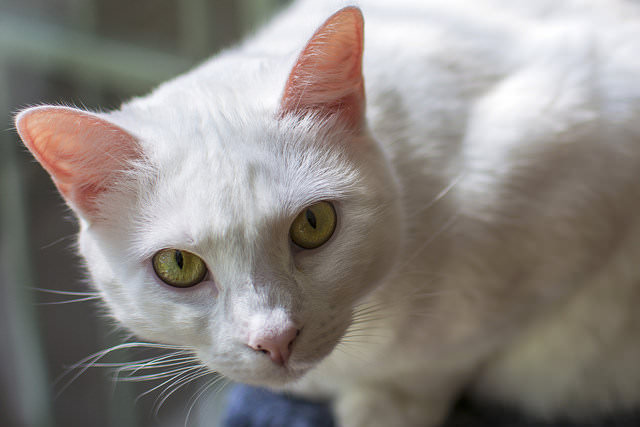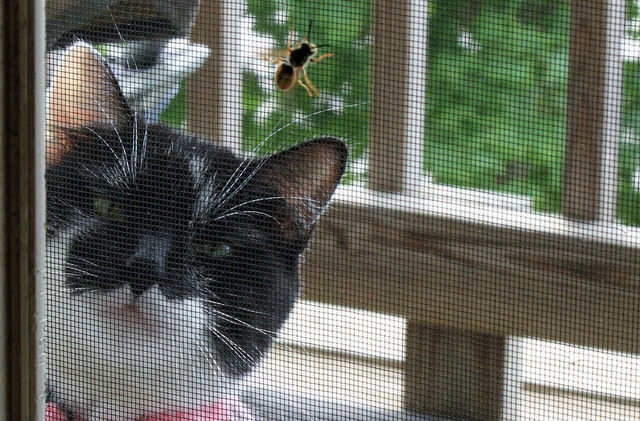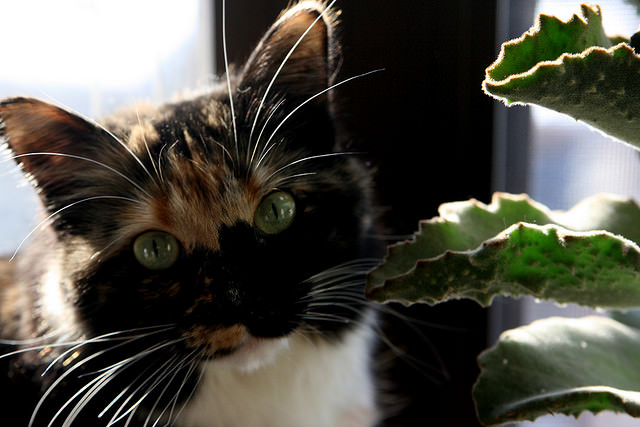You may think that your indoor cat is safe from danger. While it’s true that indoor cats face less threats than cats who are allowed outdoors, summer still presents a handful of dangers that pet parents should know about.
Below are 5 seasonal dangers to keep in mind to keep your kitty safe all summer long!
1. Overheating and dehydration
As the summers get hotter and more humid, heat stroke and dehydration become bigger threats to our cats who have limited resources to regulate their temperatures.
Heat stroke and dehydration are both very serious and should be treated immediately by your veterinarian. Act fast if you notice symptoms such as rapid panting, lethargy, drooling, weakness, dizziness, vomiting, diarrhea, a bright red tongue, dark red or pale gums, or nosebleeds.
To protect your cat from these very serious dangers:
1. Don’t shave your cat in the summer. It may seem counterintuitive, but your cat’s coat is an integral part of her ability to regulate her temperature. Instead of giving her a lion cut, help her groom away loose fur and mats with daily brushing sessions.
2. If your home doesn’t have central air, be sure to give your cat a cool place to nap. Employ the use of air conditioners (a stand-alone portable version will do the trick) and fans. On hot days you can cool your home considerably by simply closing the curtains to block out the sun.
3. Make sure your cat always has access to fresh, cool water. If you aren’t home often enough to keep her water fresh and cool, consider adding a fountain to your home.

Image Source: David Cobbin via Flickr.com
2. Sunburn
Cats who are white, light colored, hairless, or have white ears or noses are most susceptible to being sunburned. Yes, even indoor cats are at risk from window sun exposure. If your cat has been sunburned you may notice redness and irritation. Persistent scratching of the area may lead to open wounds and infection. Ultimately, a sunburned cat may develop skin cancer.
To reduce your cat’s risk of sunburn, limit her exposure to sun during the sunniest parts of the day (10am-4pm) by drawing the curtains in your home or investing in a UV-filtering film for your windows.

Image Source: Janet 59 via Flickr.com
3. Fleas and ticks
Fleas and ticks are notorious hitchhikers, which can latch onto your clothes and find their way into your home to nibble on your cat. Fleas and ticks survive by consuming your cat’s blood and can cause a number of complications such as flea allergy dermatitis, tapeworms, anemia, and Lyme disease.
Limit your cat’s risk of flea and tick related problems by checking your skin and clothes for ticks before entering your home after spending time in wooded or grassy areas, regularly use a fine-toothed comb to inspect the base of her fur for ticks and “flea dirt”, and vacuum your home frequently to eliminate eggs before they hatch.

Image Source: jeffery wright via Flickr.com
4. Bee stings
Bee stings aren’t a very common problem for indoor cats, but they can be dangerous and even fatal if not dealt with properly. There’s always a chance that a bee could slip in through an open door or a hole in a screen, and we all know how our cats will react when they notice it buzzing around the living room.
If your cat has been stung, the area will be red, swollen, and tender. Apply a cold compress and contact your veterinarian, who may prescribe a feline-friendly antihistamine. If your cat begins vomiting or develops pale gums seek emergency treatment as she may be in anaphylactic shock (a reaction that can be fatal.)
You can lower the risk of your indoor cat being stung by routinely inspecting the outside of your home for nests and by quickly replacing damaged window screens.

Image Source: Quinn Dombrowski via Flickr.com
5. Toxic houseplants
Though toxic houseplants aren’t exclusive to summer, the warmer climate and extra sun give us an opportunity to bring new plants into our homes that won’t thrive during the colder, darker months of the year.
Check out the ASPCA’s Toxic and Non-Toxic Plant List for ideas about which plants are safe to bring into your home and which to avoid. If you must bring toxic plants into your home, be sure to place them on a high shelf that your cat doesn’t have access to (but don’t underestimate your cat’s ability to climb and jump in the name of curiosity.) If you suspect your cat has consumed any portion of a poisonous plant, contact the Pet Poison Helpline at 855-764-7661.
